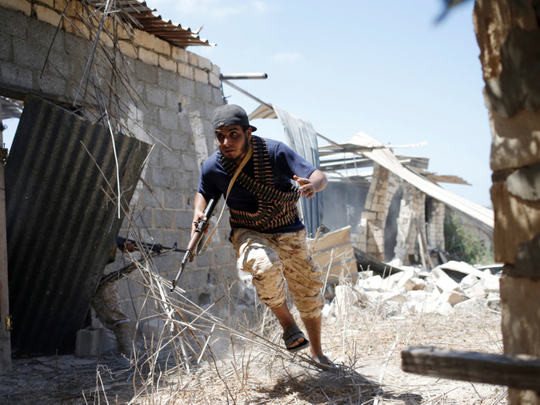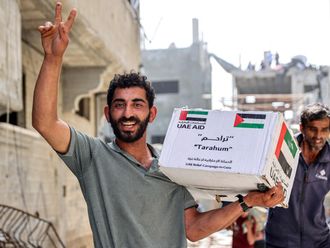
Washington: The United States launched multiple airstrikes against Daesh militants in Libya on Monday, opening a new, more persistent front against the group at the request of the United Nations-backed government, Libyan and US officials said.
Fayez Serraj, the head of the UN-brokered presidency council, said in a televised statement that American warplanes attacked the Daesh bastion of Sirte on the Mediterranean in northern Libya. No US ground forces will be deployed, he said.
The precision strikes, which targeted a Daesh tank and vehicles, come amid growing concerns about the group’s increased threat to Europe and its ability to inspire attacks across the region.
“The presidency council, as the general army commander, has made a request for direct US support to carry out specific airstrikes,” Serraj said. “The first strikes started today in positions in Sirte, causing major casualties.”
The strikes mark the start of a more intense American role in the fight against Daesh in Libya, as the US steps in to assist the fragile, UN-backed government there. They were the first strikes by the US on the group in Libya since February.
In a statement, Pentagon press secretary Peter Cook said President Barack Obama authorised the strikes following a recommendation from Defense Secretary Ashton Carter and Gen. Joseph Dunford, the chairman of the Joint Chiefs of Staff.
“They are consistent with our approach to combating [Daesh] by working with capable and motivated local forces,” said Cook, adding that “additional US strikes will continue to target [Daesh] in Sirte.”
US officials earlier this year estimated there were as many as 6,000 Daesh insurgents in Libya, including some who have abandoned Syria. But in recent months, officials say, their numbers in Libya have declined and the group is weakening there under pressure from local militias and the UN-brokered government.
Just last week, UN Secretary-General Ban Ki-moon said that Daesh fighters in Libya are facing the “distinct possibility” of defeat in their last stronghold.
And Dunford estimated in mid-July that there were only a few hundred militants still inside Sirte, which the group has used as a headquarters.
“I don’t think there is any doubt that [Daesh] in Libya is weaker than it was some months ago,” said Dunford, adding, that “They’ve suffered significant casualties in and around the Benghazi area.”
Without mentioning any future US military plans in Libya, Dunford said that “whatever actions we conduct,” aside from those meant to eliminate an Daesh threat to the US homeland, “are going to be in conjunction with” the UN-backed government of national accord.
In February, American F-15E fighter-bombers struck a Daesh training camp in rural Libya near the Tunisian border Friday, killing more than 40.
Libya slid into chaos after the ouster and killing of dictator Col. Muammar Gaddafi in 2011. The power and security vacuum left the country a breeding ground for militias, and militants including Daesh and Al Qaida affiliates.
Since 2014, Libya has been split between rival governments and parliaments based in the western and eastern regions, each backed by different militias and tribes. The UN brokered a deal in December, which tried to mend the rift by creating a presidency council and a unity government. The deal envisions an up to two-year-transitional period, followed by a vote on a draft constitution and then presidential or parliamentary elections.
Libya’s pro-government militias - mainly from the western city of Misrata - have been waging an offensive against the Islamic State group in Sirte since May.










